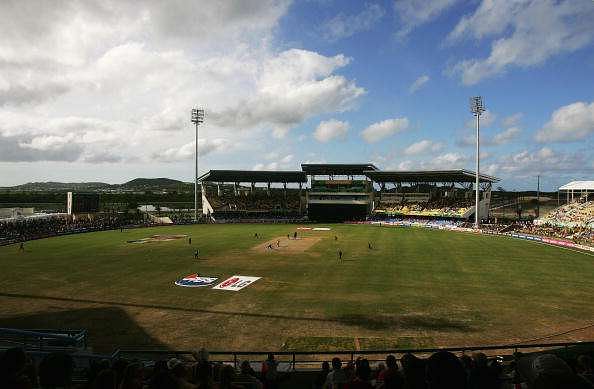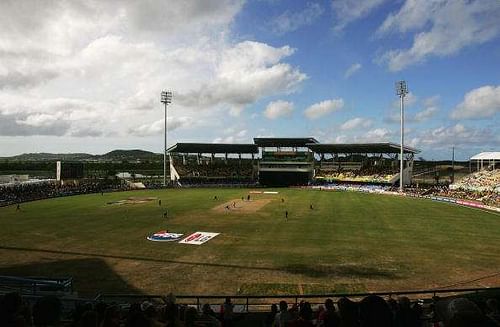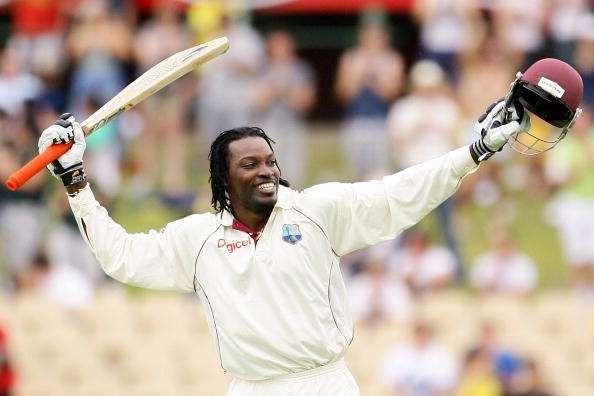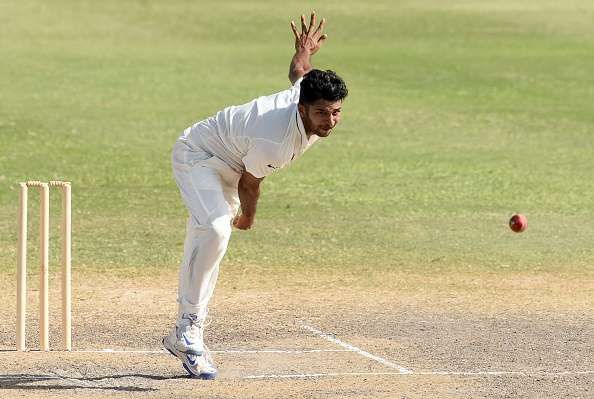
Analysing the venues for India-West Indies Tests: Sir Vivian Richards Stadium, Antigua

The Indian Cricket Team’s first litmus test, in terms of their transition from the limited-overs format to the longest format of the game, would come against a relatively mellowed West Indies side, at least by the looks of it, when they lock horns with the Caribbeans for the first of the four Tests that have been scheduled for the next 30 days. While the practice games bore the fruits that the visitors needed, with all of their top batsmen getting the requisite batting practice and the time to get themselves acquainted with the conditions, the onus of translating these performances into success stories, once they take the field would depend on various other aspects of the game apart from their own form.
Perhaps the most essential and the most encompassing aspect of them all is the venue at which a cricket match is being played. In this regard, the venue for the 1st Test – Sir Vivian Richards Stadium, Antigua – gains prime importance, as the teams would decide their combinations based on the surface that is there on offer and the other conditions prevalent at the venue. Hence, in the build-up to the first Test, let us have a close look at the venue and analyse the intricacies that may have a significant impact on the game.
Match Results
Out of the four Tests held so far at the stadium – it must be known that the stadium was built prior to the ICC Cricket World Cup 2007 – from 2008-2015, three have been draws, and just one has fetched a result when the West Indies had defeated New Zealand by 9 wickets in July 2012. The rest of them – one against Australia, in 2008, and one against England, in 2015, have been high-scoring dull draws, while the game against England in 2009 was washed out completely.
That the ground has fetched just 1 result from three completed Tests, speaks in abundance about the pitches that have been produced for the contests. Also, the fact that the all three of those games have been high scoring ones, indicates the fact that the ground has earned a reputation of being a traditionally good batting surface.

Average scores in different innings
The average score while batting first, considering the three Tests that had definite results, is 409, clearly implying that the ground has been a batting paradise for the teams batting first. However, it isn’t the case that these numbers deteriorate drastically as the matches progress. Statistically speaking, the average scores for teams batting in the 2nd, 3rd and 4th innings respectively, from the three completed games at the venue, have been 389, 283 and 239 respectively. The fact that the West Indies had chased down 102 while losing just 1 wicket in the 4th innings to record the only Test win that has been achieved on this ground, indicates that despite the wear and tear throughout the course of the Test, the pitch remains significantly good for batting.
Another noteworthy fact about the surface that has generally been offered to the teams is the number of centurions from the three completed Tests. In the 12 completed innings, there have been as many as 10 centurions, with the highest individual score belonging to the Caribbean superstar, Chris Gayle, who scored 150 against New Zealand in 2012. Kieron Powell, Gayle’s opening partner from the game also scored a hundred, making 134 in the same innings, as the West Indies openers shared an opening stand of 254 runs. These stats should comfort the visitors, who heavily rely on their batsmen to win them matches, be it at home, or away from home.
Bowling performances
While Antigua has been a hunting ground for the batsmen, it hasn’t been that bowlers have found things extremely difficult. While they haven’t picked up as many wickets as they would have liked to, their economy rates have indicated that the run-scoring rates haven’t been astronomical as such and that the batsmen have taken their time to build their innings. Kemar Roach, the West Indies fast bowler who has been omitted from the squad for the 1st Test has the most number of wickets on this ground, with 12 from 4 innings, while his former teammate, and the recently retired pacer, Jerome Taylor follows him with 10 wickets from 3 games. With 8 wickets from a solitary game, Brett Lee rounds off the top three.
If we look at the economy rates of the aforementioned gentlemen, they are 2.93, 3.58 and 2.61 respectively for Roach, Taylor and Lee. This indicates that while the wickets may have been hard to come by, the easiness of the wicket hasn’t deterred the bowlers from bowling the correct lengths. A conclusion, that the bowlers would have to play the patience game and the waiting game a bit more than the batsmen on this surface, can thus be drawn. Three bowlers have taken five-wicket-hauls at this venue, namely Roach, Lee and Sunil Narine – another West Indies cricketer who has not been selected for the series – which means that there is some reward for disciplined bowling efforts.

Speculations before the game
Quotes and thoughts have been going around in abundance, as far as the wicket for the upcoming India – West Indies Test is concerned. While India’s batting coach, Sanjay Bangar, is of the feeling that the pitch would have a considerable amount of grass cover on it, uncapped Indian fast bowler, Shardul Thakur, is of the opinion that the surface would be on the slower side, as was the case during India’s practice games. Ajinkya Rahane, one of the lynchpins of the Indian batting line-up also echoed his teammate’s feelings and said that patience will be the key on the slow Caribbean wickets.
Whether the anticipation of being greeted with a slow wicket has gained significance post the recent Tri-Nation Series held in the West Indies, involving South Africa and Australia, that saw similar slow surfaces produced, or it is a tactical move, in order to contain the Indian batsmen, remains unclear. However, tampering with the nature of the pitch and pushing it towards the slower side would not be helpful, as far as Test cricket is concerned, as those kind of pitches, too, are not likely to produce a result.
The verdict
Putting the speculations and the observations aside, if we purely base our conclusions on the stats, we would find that the side winning the toss would have no hesitation in batting first. The pitch starts out as the one that is good for batting and slowly deteriorates as the game goes on. As to whether the extent of deterioration is conducive enough to produce a result would only be known by Monday. As of now, Sir Vivian Richards Stadium, Antigua looks to be a batting-friendly surface with something in it for the bowlers, on the 4th and 5th days of the Test.